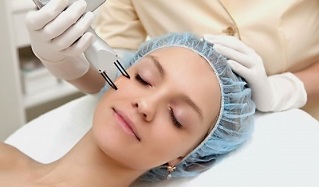It's a shame, I look like I'm still young - and wrinkles, age spots and other cosmetic blemishes are already appearing. You can get rid of them with a fractional renewal procedure. How does it work?
You always want to look beautiful no matter your age. But time relentlessly goes forward and is reflected in appearance. Over the years, the skin becomes less elastic, wrinkles, age spots and other visible defects appear. Modern technologies make it possible to prolong youth by using laser exposure to problem areas. Let's find out about fractional recovery: what it is, how it happens, and the results of this procedure.
What it is

Cells lose their activity over time, slowing down regeneration processes. It is necessary to return the youth not only visually, but also to help the cell to regenerate and continue active work. Only in this way the skin gets a healthy look, tightens and smoothes.
The first regeneration of the fractional laser was performed in 2004. It was developed specifically to treat the signs of aging. After the first studies and results with excellent effect were obtained, the procedure was actively used in many beauty salons. The actions are completely safe, effectively combating cosmetic defects.
Advantages and method of execution
There are several benefits to laser restoration to show why it's worth using this anti-aging method:
- One procedure is enough for good results;
- anesthesia is not used;
- is not an action;
- safe, no side effects;
- does not require a long rehabilitation period; The effect of
- is similar to the Botox injection technique;
- is long.
This restoration method is called fractional because it only affects problem areas that are exposed to small laser beams. Untouched areas, namely epidermal cells, begin to function actively, multiply and quickly heal laser-treated areas. The full rehabilitation period lasts no more than three days, depending on the condition of the skin. Collagen is actively produced in cells, which in turn:
- smoothes wrinkles, creases;
- skin is tight;
- smoothes the oval of the face;
- pigment spots are highlighted.

The procedure does not cause discomfort, is painless, the redness disappears quickly. Partial laser operation is somewhat similar to the beam restoration method, but it has more capabilities and is more efficient. It is otherwise called photorejuvenation.
The principle of operation is that damaged skin is exposed to heat stroke in sufficiently high temperature ranges. The beautician uses a small device on which the elements through which the laser beams penetrate are mounted. Because the rays are very hot, the skin is treated very quickly to avoid burns.
The result depends on the severity of the defects. The deeper the wrinkles, the more treatment will be needed. The time of healing also depends on the individual and his state of health.
The skin is sufficiently exposed to a laser beam that is thinner than two hundred microns, so a new layer of epidermis appears on the treated area. The rays are similar to a thin sieve and are used only for problem areas, on the face, neck, legs, around the eyes. This sieve allows you not to affect the surroundings and allow them to activate the healing and regeneration of cells.
Types of photo updates
In the field of cosmetology, two types of fractional thermolysis are used, which differ from each other in the degree of effect and basic properties.
- Ablative method- thermal activity acts on the upper layers of the skin, on the cells.
- Non-Regenerating Regeneration- Laser beams act only on the deep layers of the epidermis.
Many fractional machines today use CO2 laser beams. They are more advanced and have moved to a new level in recent years. Before starting the procedure, it is worth specifying which laser will be used, on which quality and efficiency depend.
To achieve the best effect, it is recommended to combine two types of fractional thermolysis - ablative and non-relativistic. Double impact feet help improve the result and keep it for a long time. Thanks to modern equipment, beauticians develop rejuvenation programs for skin type and health.
When to refuse

Like any other intervention in the body's natural work, partial facial rejuvenation has its own contraindications. Ft procedures should not be performed if:
- you are pregnant;
- is epilepsy;
- for oncology;
- severe inflammation of the skin with psoriasis;
- in the case of herpes;
- if you have recently had a chemical peel on your face;
- or sunbathing;
- and vitiligo;
- Chronic diseases such as diabetes, poor blood clotting.
Contraindications should not be ignored, as the existing problem can be significantly exacerbated by heat exposure and exacerbate the situation.
What to expect
Photothermolysis is intended for face lifting and skin rejuvenation. With the help of cosmetic procedures, it becomes immediately noticeable how the skin is tightened, wrinkles and clearer outlines disappear within a few days. To make the effect even better, it is recommended to perform several procedures with a difference of one month to six months, depending on the first result.
To improve the condition of the face, many beauticians recommend combining fractional modes of CO2 laser exposure. This, in turn, allows you to maintain your youth for a long time, prolong the skin regeneration processes and prevent premature aging.
The patient recovers quickly enough within one week. The time also depends directly on the type chosen. In the first day or two, the skin becomes significantly swollen, there is redness. However, after 4-5 days, the dead cells leave the skin, the epidermis is covered with a new and healthy layer. If you coordinate your actions properly, choose a good, responsible beautician, find out if there are no contraindications, then the photo update procedure will be just good.














































































